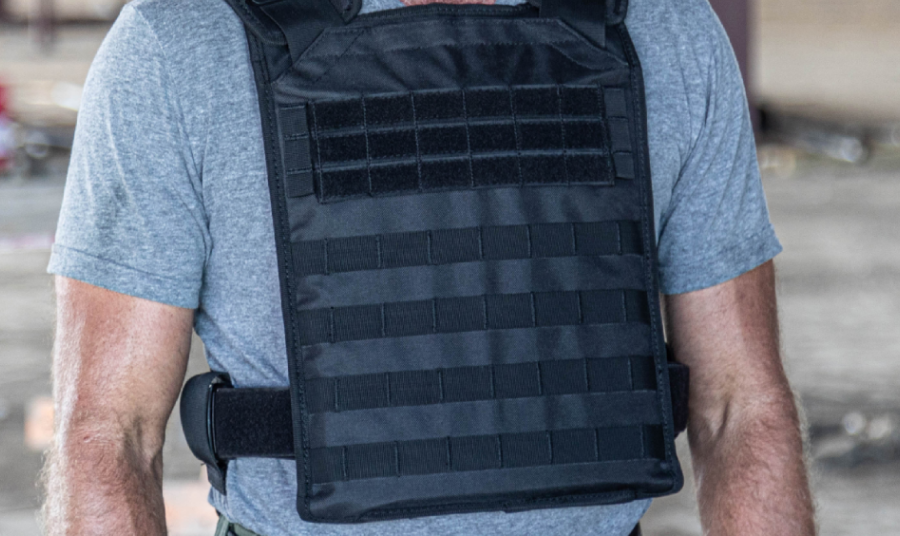Some people who are new to body armor might be confused about the differences between all the different levels. Some might assume that as long as they’re wearing body armor of any kind, they should be safe against all types of bullets. Others assume that Level IIIA armor is more powerful than Level III armor because the added letter makes it seem that way. Both these assumptions are wrong.
Bulletproof protection levels are determined by the National Institute of Justice, which subjects vests to rigorous testing to determine their resistance. While any company can claim to make bulletproof materials, the NIJ will determine if the user will still be alive after being shot, by measuring the amount of back face deformation. A “dent” in a vest is acceptable, but too much deformation will punch deep into a victim’s chest cavity to the point of death. Just because a bullet is stopped does not mean the vest is a life saver.
In the world of bulletproof vests, the NIJ classifies armor according to type, beginning with Level IIA at the bare lowest bulletproof rating and ending with Level IV at its maximum strength. Here at BulletSafe, we don’t bother with the lighter Level IIA vests, which are rated to only stop small and medium caliber bullets like 9mm and .40 S&W. Our most popular product, the VP3, is rated to stop Level IIIA threats, while our Tactical Plate Carriers come with Level IV plates for maximum protection.
Level IIIA products like the VP3 are rated to stop most pistol caliber threats ranging from .22LR all the way up to .44 magnum, while Level IV products such as the plates in the BulletSafe Tactical Plate Carrier are hard armor capable of stopping rifle rounds from .223/5.56x45mm to .30-06 AP.
Now, there may be some confusion about Level IIIA and Level III. While both seem similar because of their nomenclature, the two armor types could not be more different. Level III armor, despite its name, is the more powerful of the two. Level III armor is much like Level IV both in terms of its ability to defeat rifle fire and its construction as a hard armor plate, meant to be worn as part of a plate carrier system.
Level IIIA, on the other hand, is almost always soft lightweight armor meant to stop pistol rounds. In some cases, helmets such as the MICH, ACH, and PASGT are rated at a IIIA level, but just like IIIA vests, they are not meant to resist rifle fire.
IIIA vests are usually used by law enforcement professionals, as 9mm and other pistol rounds are a more common threat than large caliber rifle rounds on the streets of a bad town. Level IIIA vests also weigh less than the heavy Level III SAPI plates used by United States military personnel in modern IOTV armor. Since our service personnel in tan and green face more considerable threats than the men and women in blue, they are expected to have better protection. The “bad guy” weapon of choice around the world is the AK-47, which would punch straight through a civilian cop’s IIIA vest, while a Level III plate would stop both the AK’s 7.62x39mm or a full sized 7.62x51mm round from an Iranian G3. Level IV armor, also found in military use as ESAPI armor, is rated to stop all rifle fire up to and including the .30-06 AP round, a large, hard-hitting round famous for being used in the .30 caliber M1919 machine gun and M1 Garand from World War 2.
What bulletproof topics would you like to read about in the future? Tell us in the comments below!


2 comments
Dustaniel
Level IIIA says it stops “most” handgun calibers (obviously excluding .460, .480 &/or .500 i.e.) from 22lr up to .44 magnum. But why does most of these tests when using .44 magnum caliber use .44 magnum jacketed hollow points for? Hollow points are meant for expansion, NOT penetration.
As we all know modern day ballistics & ammunition making is far advanced these days. Why is the aforementioned .44 magnum testing done using jacketed hollow points? Why not test level IIIA using heavy 300+-400 grain deep penetrating .44 magnum cartridges instead?
With that being said, will level IIIA armor stop said cartridges? Will level IIIA stop a .44 magnum 350 grain hard cast wide flat nose projectile or not? Or how about those .44 magnum caliber deep penetrators? I think the statement “up to .44 magnum” needs to be further explained & tested. Or if it’ll only stop .44 magnum jacketed hollow points ONLY, and NOT heavy/hot penetrators .44 cartridges needs to be pointed out! Thank you!
ANTHONY BELLANZANNO
ANOTHER WEBSITE CLAIMS THAT THE 111A PLATE WILL STOP MORE THAN THE 111 PLATE. I COULD NOT BELIEVE IT NOR WILL I UNDERSTAND IT. THE 111A AS I HAVE READ IS NOT AUTHORIZED BY THE NIJ..THEY MUST HAVE A LARGE INVENTORY OF 111A. ALL THAT I HAVE READ AGREES THAT 111 IS BETTER PROTECTION 111A.